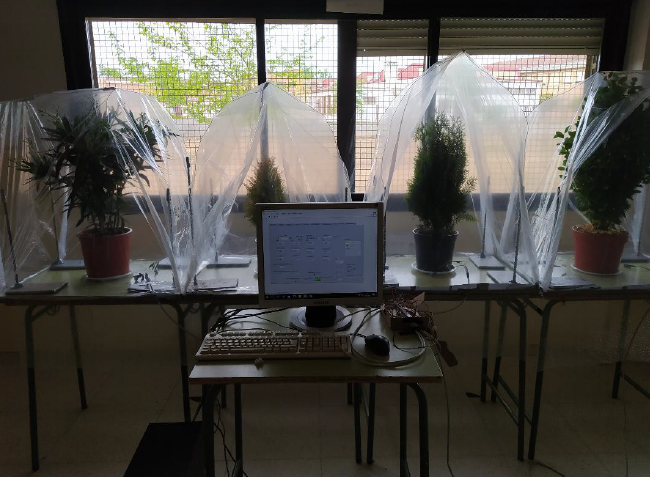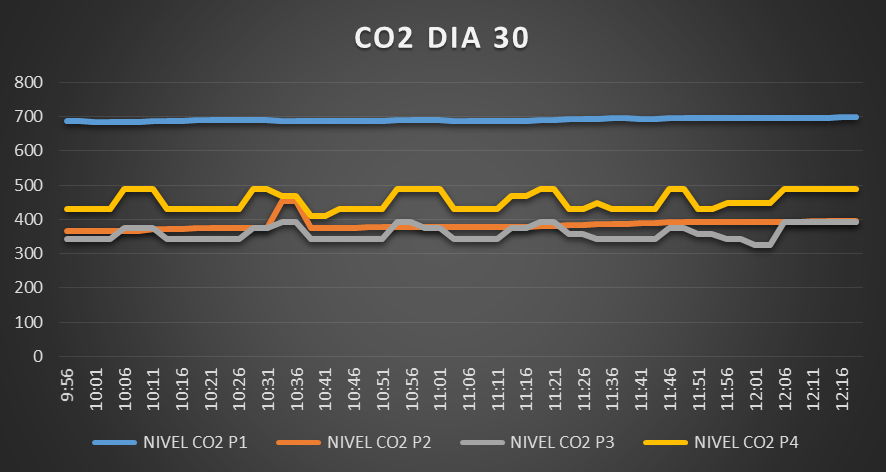The main objective of this work is to compare the photosynthetic performance ofdifferent species of gardening plants, to determine which of them is moreefficient in absorbing CO2 and that this species is the one used in parks andgardens in order to contribute better at mitigation. of climate change.
Our starting hypothesis is based on the fact that those species with higher foliardensity will be able to capture more light and therefore achieve higher primaryproduction, being more efficient from the photosynthetic point of view and,therefore, reducing levels atmospheric carbon dioxide.

For our study, four species of plants were chosen from which are commonly usedin the conditioning of parks and gardens.
The photosynthetic performance of these plants was measured in two ways:
a) Calculation of the net primary production: expressed in g C / m2 ∙ day,with C being organic carbon.
b) CO2 consumption: with individual hermetic structure with iron wire andplastics. Next, CO2 sensors, air temperature and humidity sensor were installedin each of the plants. The sensors have been wired and programmed withArduino, and the data logging has been designed with the LabVIEW program.


The photosynthetic activity taking into account both the calculation of the netprimary production and the carbon dioxide consumption indicates that there isa higher photosynthetic efficiency in tuya and in the lemon cypress, notcoinciding with our initial hypothesis.

The two plants that absorb the most CO2 are conifers, probably because theirleaves are rough and they can incorporate it more easily. This coincides with astudy by the University of Seville that identifies pines as the trees that absorbthe most CO2.
You can see the complete project here: https://youtu.be/OByvB8aMgwM (Spanish)


Gongatulations! Great research and action!
Please log in or sign up to comment.